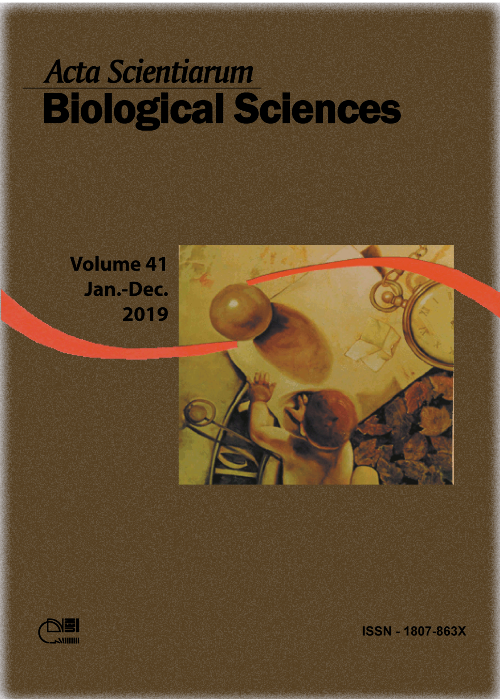Post-seminal structure and development of the hemiparasitic plant <i>Escobedia grandiflora</i> (Orobanchaceae)
Abstract
Escobedia grandiflora (L.f.) Kuntze is a wild hemiparasitic plant with orange roots. Little is known about the development of initial parasitism with the host, despite the significant value of roots for Central and South American communities. Therefore, this study aimed to characterize post-seminal structure and development of E. grandiflora in Pennisetum purpureum host. To analyze the structure and development of E. grandiflora, seedlings, stems and roots samples were processed and examined under light, confocal and scanning electron microscopy. Escobedia grandiflora seeds are composed of seed coat, perisperm, and embryo. Emergence of the radicle began eleven days after imbibition. Seedlings showed a root hair collar encircling the axis at the root-hypocotyl junction with elongation of internal cortical cells. Seedlings formed haustoria and successfully reached of the host roots 22 days following root emergence. In the root many starch grains were observed, albeit more scarce in the hypocotyl. After 43 days of root emergence, the seedling stage was finished with the formation of the definitive leaves, and star of the plant stage. After 64 days, root ramification, amount of starch, and orange pigmentation increased with formation of haustoria. The developmental pattern of E. grandiflora plants was slow, but the roots grew faster than the stem. Escobedia grandiflora seeds were not endospermic and have limited nutritional value. After root emergence, the young seedling must develop roots and starch storage towards to haustorium formation and attachment to host roots.
Downloads
DECLARATION OF ORIGINALITY AND COPYRIGHTS
I Declare that current article is original and has not been submitted for publication, in part or in whole, to any other national or international journal.
The copyrights belong exclusively to the authors. Published content is licensed under Creative Commons Attribution 4.0 (CC BY 4.0) guidelines, which allows sharing (copy and distribution of the material in any medium or format) and adaptation (remix, transform, and build upon the material) for any purpose, even commercially, under the terms of attribution.
Read this link for further information on how to use CC BY 4.0 properly.












1.png)




3.png)













